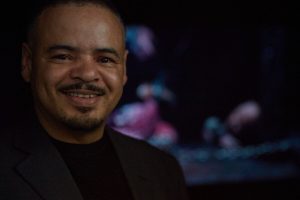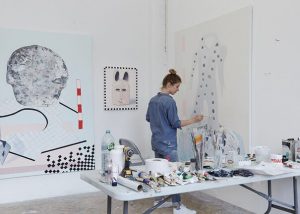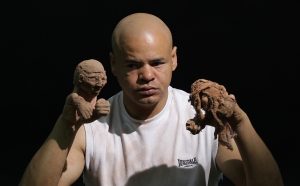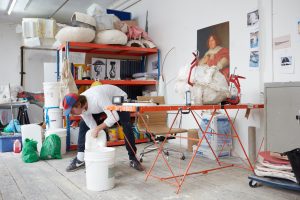Ahead of the XL Catlin Art Prize 2016 opening tomorrow (Thursday 5th May) FAD managed to catch up with all of the finalists, next up we have RCA graduate Jude Crilly.
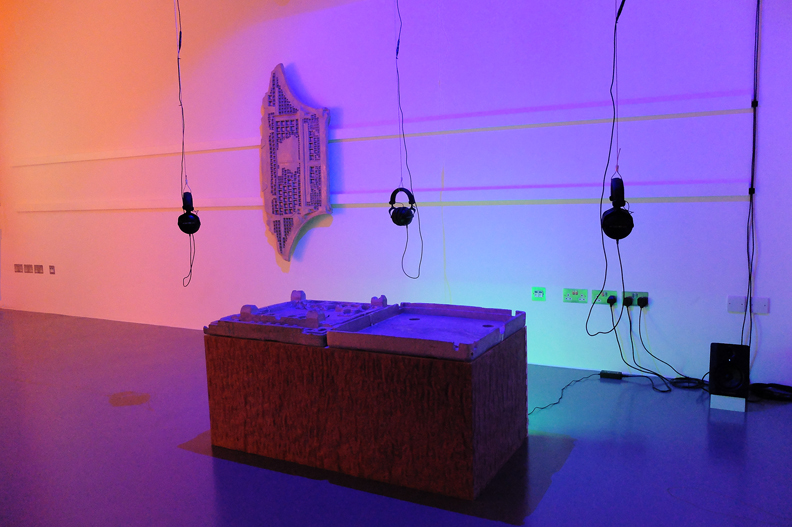
Jude Crilly ‘flu’
1 Can you tell us about your work and what are the main ideas you try and express?
I work across sculpture, sound, text and performance to build multi-faceted narratives. I’m interested in trans-subjectivity, and how experience is mediated through language and cultural coding. My work is multidisciplinary: I like to play with the porous nature of objects, language, bodies and place. I’m inspired by new materialist feminist thinkers like Karen Barad, where ‘matter is neither fixed and given, nor the mere end result of different processes’. So, breaking open fixed systems to create new luminous science-fictions.
My starting point is often writing. My writing secures a narrative backbone, and the visual work spins out from there: it can evolve into a sound work, a performance or a series of sculptural objects. Besides writing, I spend ages collecting material I hear in passing, conversations, out-of-context linguistic offcuts, and rearrange it all together in a sort of hypernarrative. I think of my sound work visually, almost like a set of images. In the recording and editing process I go for a lot of detail and layering, which works well with my multi-channel pieces. Over the last year I made a cycle of six sound works, which dealt with future scenarios. They were shown either as part of installations, or soundtracks to performances.
My latest performance, Plays for the Strange Stranger, was shown at the Contemporary Art Centre in Vilnius, Lithuania (in collaboration with artist Floris Schönfeld). It was about the drive towards a super-communion with all beings, based loosely on Timothy Morton’s theory of ecological thought. This state was achieved through transcendental (i.e. psychedelic) dance: we worked with Lithuanian dancers and techno composers in the performance. It was a work that dug up a lot of questions about gender and technology.
2 Where and what have you been studying and how do you feel it has benefited you?
I studied Sculpture at RCA in London. I was lucky to be part of an amazing year group full of free-spirited, ambitious artists. We worked hard and partied hard, so, good times! I approached sculpture in a sculpture is ‘space’ and ‘affect’, rather than sculpture is a ‘thing’ way, which is where my interest in sound, performance, and environment really developed. Over the two years I ran a project space showing work of friends, which was a great experience. I also laid the groundwork for an online radio station and audio distribution platform for sound-based artist, which I’m launching later this year. The best thing I took away from my studies was a strong sense of conviction in what I’m doing.
Self-initiative was and remains very important to me. If you’re not happy with what you see around you, or how things are done, do it better. London is a tough place to be an artist: art and culture spaces are always disappearing, studio spaces are teeny tiny and expensive. Still, there’s always a way, and when you pull something off, the rewards are that much sweeter.
3 Can you tell us about the work that will be on show at the XL Catlin Art Prize 2016?
My work for the XL Catlin Art Prize 2016 is a multi-disciplinary installation. The core of the work is a sound piece in a Mercedes Benz, which is parked in the gallery space. The space around the car is lit with midnight-blue fluorescent lights, and a series of hanging sculptural works descend from the ceiling, resembling exploded, scattered body parts. Inside the car, the sound piece plays from the car’s sound system, as the listener sits in the back seat. As you listen, the pulses of the sub-bass speakers vibrate through your body, you are very much part of it, implicated, sort of channelling the narrative. It creates a weird feeling, you don’t know where the protagonist really is, the voice feels very virtual and epicene, it’s pretty sci-fi.
The voice in the car is that of a fictive, ridiculous EU Commissioner who takes a night ride in his Benz, cruising past the rubbish and chaos of the city. He explains everything around him with polished political finesse. His thought process is constantly interrupted by Euro dance remixes, hyperactive synthesized sound, driving him to the point of nervous collapse. The voice liquefies into a stream of consciousness, that keeps losing its purpose and finding it. I like the idea of the remix, taking a pop song and distorting into something really dark, but really alive. At heart, the work is about the exclusivity of space which runs through society: interior, exterior, inclusivity, exclusivity, and the constant threats that tap, tap, tap the surface of that fragile bubble. All as you sit in the back of this corporate car, listening to ramblings on the tax havens, referendums and the Calais Jungle. It becomes a sort of euro-trash-psychodrama.
XL Catlin Art Prize 2016 Londonewcastle Project Space, 28 Redchurch Street, London E2 7DP
Thursday 5th – Sunday 22nd May 2016 www.xlcatlinart.com
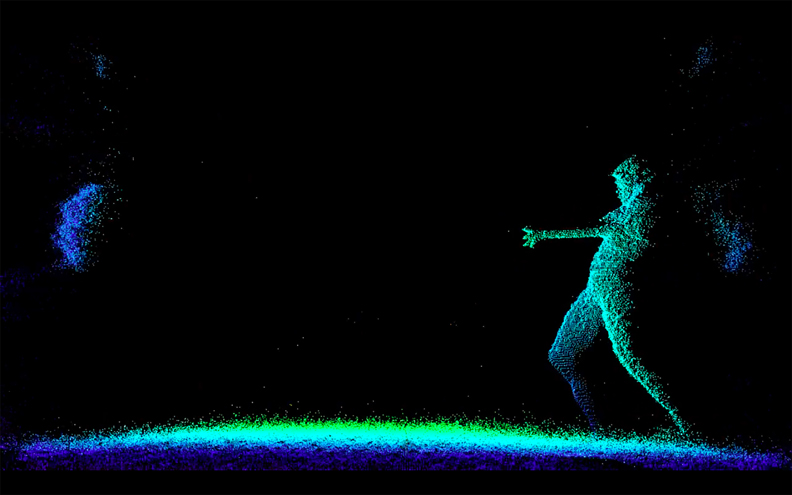
Jude Crilly ‘Calais Bounce’ 2015

